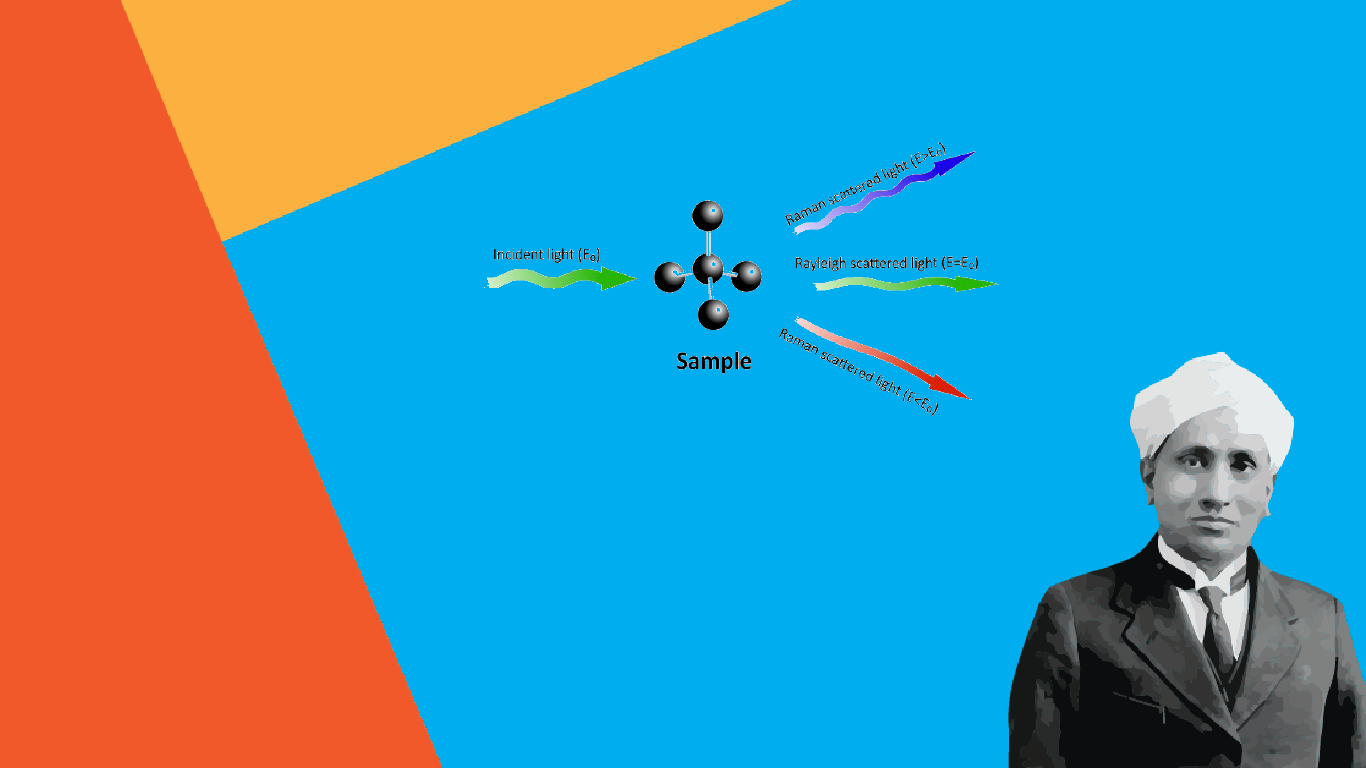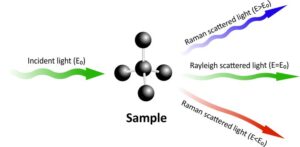Raman Scattering – A Brief Introduction

Raman scattering is a phenomenon that occurs when light interacts with a material.
It was first discovered by Indian physicist C.V. Raman in VS 1985 and is named after him.
When light is shone on a material, some of the light is scattered in different directions.
This scattered light has different frequencies than the original light, and the difference in frequency is known as the Raman shift.
This shift is caused by the material’s molecules vibrating at different frequencies.
Types Of Raman Scattering
There are two types of Raman scattering: elastic scattering and inelastic scattering.
Elastic scattering occurs when the frequency of the scattered light is the same as the frequency of the original light.
Inelastic scattering, on the other hand, occurs when the frequency of the scattered light is different from the frequency of the original light. Raman scattering is a form of inelastic scattering.
Introduction to Raman Spectroscopy
The intensity of Raman scattering is very weak, making it difficult to detect.
However, modern techniques such as Raman spectroscopy have made it possible to detect and analyze Raman scattering.
Raman Spectroscopy is a powerful analytical tool that uses the scattering of light to study the vibrational, rotational, and other low-frequency modes of a molecule.
When a photon of light interacts with a molecule, some of the photons are scattered, and the energy of the scattered photons is shifted.
This shift in energy is related to the vibrational energy of the molecule, and it can be used to identify the molecule and study its properties.
Raman spectroscopy is widely used in chemistry and biology to study the composition and structure of molecules in a wide range of samples, including liquids, gases, and solids.
It is particularly useful for studying complex mixtures, such as biological fluids and fuels, because it can provide detailed information on the chemical composition and structure of the molecules in the sample.
It can be used to study everything from biological samples to inorganic materials, and is used in fields such as chemistry, physics, and biology.
Applications Of Raman Scattering
Raman scattering can also be used to study the crystal structure of a material. Raman spectroscopy can be used to identify the type of crystal structure in a material and to determine the crystal’s symmetry. This is known as Raman crystallography.
Raman scattering has many applications in both research and industry.
In research, Raman spectroscopy is widely used in the study of biological systems, such as proteins and DNA, as well as in the study of materials such as semiconductors and polymers.
In industry, Raman spectroscopy is used in quality control and process control, as well as in the development of new materials.
One of the most important application of Raman scattering is in the field of medical diagnosis.
Raman spectroscopy can be used to identify and analyze cancer cells, which can aid in the early detection and treatment of cancer.
Raman spectroscopy can also be used to study the chemical composition of cells and tissues, which can be used to diagnose and monitor diseases such as diabetes and osteoporosis.
Raman scattering can also be used in the field of art conservation and archaeology.
Raman spectroscopy can be used to identify the chemical composition of pigments and dyes in paintings and other artworks.
This can help in the preservation and restoration of artworks. Raman spectroscopy can also be used to study the chemical composition of artifacts and other materials found in archaeological excavations, which can help in the study of ancient cultures and civilizations.
Final Thoughts
In conclusion, Raman scattering is a fascinating phenomenon that occurs when light interacts with a material.
It was discovered by C.V. Raman in 1928 and is named after him. Raman scattering is caused by the material’s molecules vibrating at different frequencies.
Raman spectroscopy is a powerful tool for identifying and analyzing the chemical composition of a material, and has many applications in both research and industry.
It can be used to study biological systems, semiconductors, polymers, and even artworks and artifacts.
Raman scattering has the potential to revolutionize the field of medical diagnosis and open new doors for the study of ancient cultures and civilizations.




